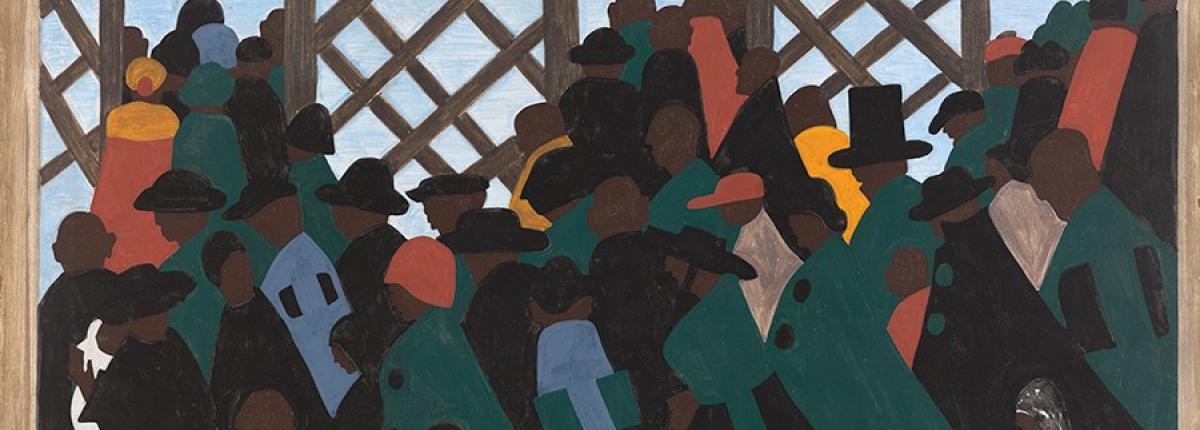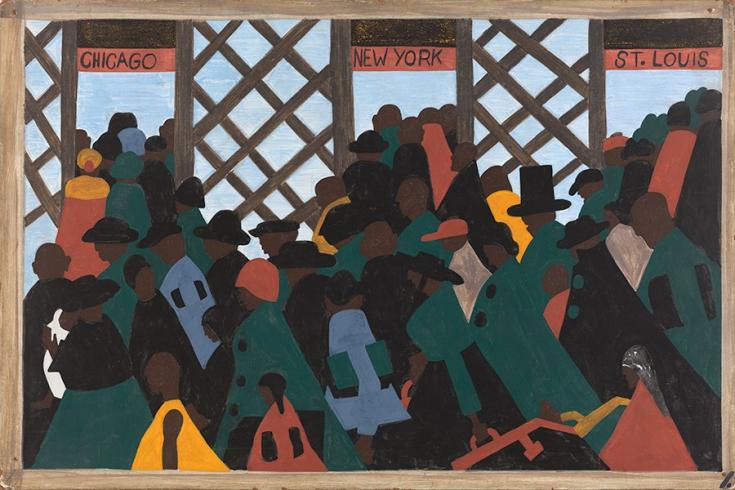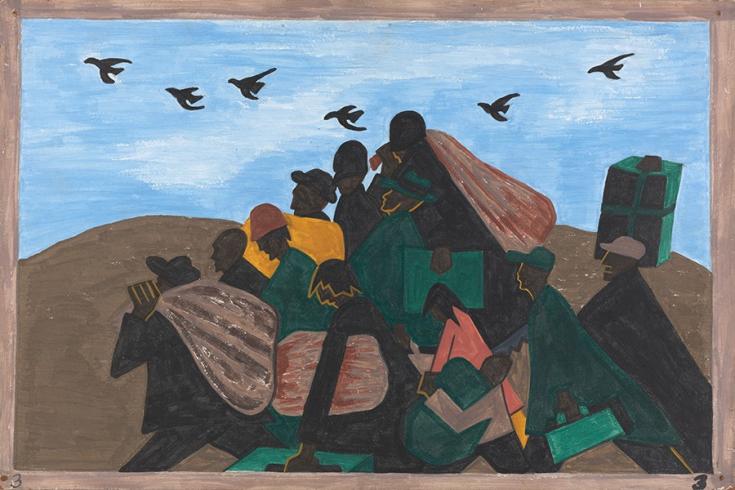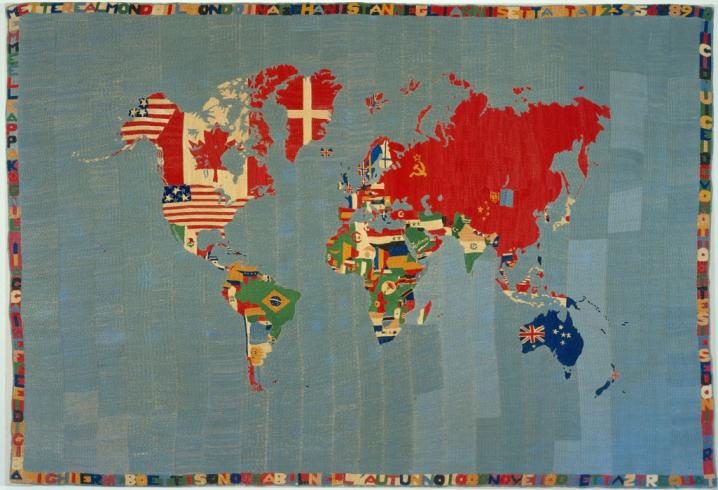Modern Human Migration

Part 1: The Great Migration
Introduce:
- Watch this short video on the Great Migration.
- As students are watching the video, they should jot down their responses to the following questions:
- What was the Great Migration?
- What impact did the Great Migration have on the cities to which the migrants traveled?
- What impact did the Great Migration have on the cities from which the migrants left?
- Students should share their responses to these questions.
- In pairs, students should look at the full Migration Series by Jacob Lawrence. As they study the panels, they should jot down responses to the following questions:
- What was life like in the South?
- What was life like in the North?
- For what reasons did migrants decide to travel to Northern cities?
- Students will use their responses in the next portion of the lesson.
Part 2: Modern Human Migrations
- Explain to students that there are other migrations, both forced and voluntary, that have taken place across the world and that there many reasons people migrate from or flee their home countries. Ask students:
- Based on what you learned about the Great Migration, what are some reasons groups of people might choose to migrate?
- What are some reasons groups of people might be forced to migrate?
- What is the difference between an immigrant and a refugee?
- Based on student responses, explain that there are four major reasons for migration: economic, socio-cultural, political, and environmental. Students should jot down some examples why people might migrate for these four reasons.
- Within these four reasons, there are two primary factors:
- Push factors of migration: These are factors that force people to move. In many cases, they are forced to move because they are at risk of harm if they stay. Common push factors are genocide, war, civil unrest, famine, drought, and religious extremism.
- Pull factors of migration: These are factors in the destination country that attract people to leave their homes. Common pull factors are better job and educational opportunities.
- Discuss the following question with students:
- Based on what you’ve learned about the Great Migration, what do you think was the primary factor for migration?
- Teacher’s note: Use this as an opportunity for students to hone their argument writing skills. There is no right answer, but students should be able to defend their position. For example, it could be push: violence in the South, Jim Crow laws; or it could be pull: wanting better job and educational opportunities. Students should use evidence from the video and the panels to support their position.
- Based on what you’ve learned about the Great Migration, what do you think was the primary factor for migration?
Research:
- Students will now explore other modern human migrations.
- With the same partners, have students explore Google Earth’s Modern Human Migration presentation.
- Choose one of the following human migrations discussed:
- Refugees of WWII
- Land disputes in Israel and Palestine
- Vietnamese boat refugees
- Afghan evading invaders
- Migrant workers in China
- Myanmar’s Rohingya crisis
- Syrian migrant crisis
- United States Immigrants
- After selecting one of the human migrations, in partners, students will research that particular migration.
- Teacher’s note: After students acknowledge that there are many complex, intertwining factors leading to migration, they should try to use their argumentative skills to select and justify the most pressing factor that influenced this migration.
- As part of their research, students should:
- Identify the type of migration - Are people migrating voluntarily or are they being forced to migrate?
- Describe the reasons for migration - What are the reason(s) people are migrating? Discuss each reason in detail as it pertains to that particular migration story. What are the core conflicts that the migrant population faces?
- Identify and describe the primary factor for migration - Are people migrating because of a certain push or pull factor? How do you know?
- Empathize with a migration story - Find a story of a person or family who actually made this migration. What did you learn from reading about their experience? What did you discover were the challenges and rewards of their migration experience?
- Connect human migrations - Now that you have learned about another human migration, how does it compare to the 20th-century Great Migration in the United States? What are some common factors you have found between both migrations? How has learning about two migrations led you to a deeper understanding of why people migrate?
- Connect to self - Talk with family members to learn more about a migration in your family. What were the push/pull factors of your family migrating?
Part 3: Visual Presentation of Human Migration
- Students will create a visual presentation (on presentation boards) of the human migration they researched.
- They can visually show the story of their selected migration through:
- Photographs
- Collage
- Maps
- Drawing
- Multimedia
- Students may choose to research an artist who depicts the story of that migration. Then, reflect on how the artwork leads to a greater understanding of that migration.
- As a starting point, teachers may want to encourage students to explore The Phillips Collection’s exhibition The Warmth of Other Suns: Stories of Global Displacement to learn more about historical and contemporary artists exploring experiences and perceptions of migration and the current global refugee crisis.
- They can visually show the story of their selected migration through:
- As part of the presentation, they should write and post the following sections that SYNTHESIZE their research findings:
- Name of the migration
- Reasons for migration
- Type of push/pull factors for migration
- Story of a migrant
- Connections to The Great Migration
- Visual representations of the migration
Share:
- Each pair of students should prepare and lead an oral presentation to the class about what they learned about the migration they researched.
Additional Context
Lesson Context
Over the course of history, humans have migrated for many different reasons, including for economic, socio-cultural, political, and environmental factors.
The Great Migration, the flight of over a million African Americans from the rural South to the industrial North following the outbreak of World War I, is an example of a human migration that occurred within the same country. Jacob Lawrence, whose family migrated during the Great Migration, created an ambitious 60-panel series to portray the Great Migration. By Lawrence’s own admission, this was a broad and complex subject to tackle in paint, one never before attempted in the visual arts. The series captures themes of struggle, hope, triumph, and adversity—themes that resonate across all human migration experiences.
Key Terms
Great Migration: In the Southern US, African Americans endured blatant discrimination and segregation as part of Jim Crow laws, as well as poor economic conditions. In the hopes of improved living and working conditions, hundreds of thousands of African Americans migrated from the South to the North, in particular to Chicago, Los Angeles, Detroit, Philadelphia, and New York. The Great Migration happened in two major waves: the first one being from 1916-1940 and the second one from 1941-1970.
Immigrant: A person who chooses to resettle in a country different from the country in which they were born.
Pull factors of migration: These are factors in the destination country that attract people to leave their homes. Common pull factors are better job and educational opportunities.
Push factors of migration: These are factors that force people to move. In many cases, they are forced to move because they are at risk of harm if they stay. Common push factors are genocide, war, civil unrest, famine, drought, and religious extremism.
Refugee: A person who is forced to flee his/her home country, often due to extreme violence against groups of people due to race, religion, social, or political status in the home country.


